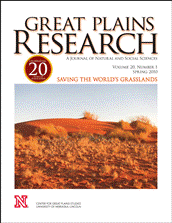Great Plains Studies, Center for
Date of this Version
May 1996
Abstract
Jim Bender provides the rationale for pursuing pesticide-free farming and a detailed model of conversion based on his experiences on his own 642 acre farm in southeast Nebraska. Reviewing such deeply ingrained characteristics of conventional agricultural systems in the Plains as separation of livestock from crop production, minimal crop diversity, and the lack of multi-year crop rotations, he recommends that conversion be undertaken gradually over several years as more experience is gained with pesticide-free systems.
In preparing for conversion from conventional to pesticide-free agriculture, one must learn to build terraces and waterways to control soil erosion, to rotate and diversify crops, and to incorporate livestock into the rotation. Bender, whose first challenge was battling soil erosion, then farming without pesticides or synthetic fertilizers, stresses that teamwork among farmer, lender, manager, and landowner is essential throughout the conversion process.


Comments
Published in Great Plains Research 6:1 (Spring 1996). Copyright © 1996 The Center for Great Plains Studies, University of Nebraska–Lincoln. Used by permission. http://www.unl.edu/plains/publications/GPR/gpr.shtml